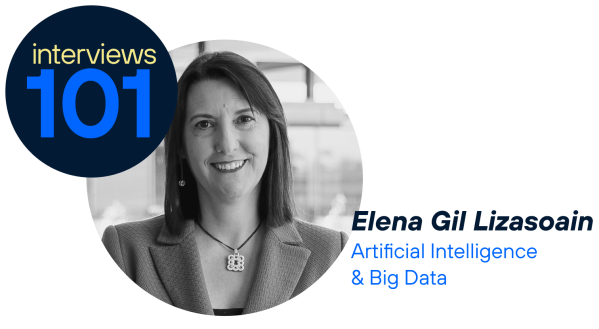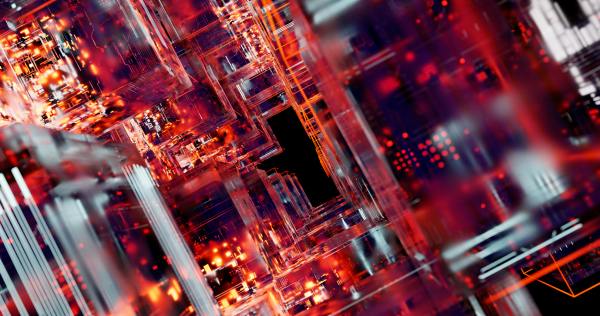Artificial intelligence is a field of computer science responsible for creating systems and programmes capable of providing machines with human abilities such as learning or the ability to plan actions, imitating the capabilities of people. This is one of the most fashionable technological concepts and its applications are very useful both in the private and professional spheres, covering different sectors such as virtual assistants, cybersecurity, medicine and robotics. One of the existing types of AI is generative artificial intelligence.
What is generative artificial intelligence?
artificial intelligence with the ability to create new content such as music, videos, text, audio or images. Models of this type of artificial intelligence learn the patterns and structure of their input training data and then generate new data that have similar characteristics.
Generative AI uses a machine learning model to learn patterns and relationships from a dataset of human-created content and then uses patterns it already knows to generate content. The big difference between generative AI and more established types of AI, such as analytic or discriminative, is that generative AI makes the leap from cognitive capabilities into the realm of creative capabilities. With generative, the machine produces new information rather than simply recognising, analysing or classifying existing content.
The impact of generative AI is such that a KPMG study claims that nearly four out of five business leaders see it as the technology that will have the biggest impact on their business in the next five years.
Generative AI: time to stop and think
Last April, José María Álvarez-Pallete, CEO of Telefónica, said that the explosion of generative AI will be “a turning point in humanity, probably greater than the advent of the printing press or nuclear fission”. Today’s AI models have increased their learning speed by more than 100 million times in the last decade because AI systems were trained on limited amounts of data whereas today they are fed by the vast (and growing) amount of data available on the internet.
“The result is that today, Gen AI is able to pass the medical entrance exam and the bar in the top percentile. Today, Gen AI writes 40% of the code of a software engineer and begins to develop complex capabilities such as deception. Our ability to distinguish between Gen AI-generated text and human-generated text is already impossible in practice,” said Álvarez-Pallete, for whom generative artificial intelligence has “the capacity to advance humanity exponentially”.
However, as in previous technological revolutions, “we cannot let it run wild. Not everything that technology is capable of doing is good or socially acceptable,” said the Telefónica chairman, who warned that “an uncontrolled Gen AI or one with a lust for power is an existential risk. It could produce molecules that are harmful to humans or lead to fake news or deepfakes becoming a threat to democracy through massive campaigns of systematic and undetectable disinformation.
Risks of generative AI
Richard Benjamins, Chief Responsible AI Officer at Telefónica, also believes that generative AI represents a major advance in artificial intelligence, as this technology is now “able to manipulate our language as well, the main feature that separates humans from other living things”. In addition to the advantages we have already seen that this type of technology offers, ChatGPT, as one of the great referents of generative AI, “is capable of inventing things that are not true; the so-called hallucinations”. It also warns that “ChatGPT could generate an enormous amount of disinformation (fake news) in a very short time. In the wrong hands it could cause serious problems in societies and even influence democratic elections. ChatGPT is so good that even legal or medical professionals might be tempted to use it in their work, with all the consequences and risks.
For this reason, the executive considers it “important, necessary and positive” that more and more organisations are reflecting on the possible negative impacts of the use of artificial intelligence.
Deepfakes: what they are and how to detect them
Although deepfakes are not new, it is true that the popularisation of generative AI has led to an increase in their creation and dissemination. But what is a deepfake and how can we detect it?
It could be defined as a spoofing technique that collects data on physical movements, facial features and even voice and then processes it through an AI encoding algorithm or a Generative Antagonistic Network (GAN) to create fake but hyper-realistic audiovisual, graphic or voice content.
While it is true that the level of sophistication is increasing and, therefore, it is more difficult to detect a deepfake, there are a number of details that can help to identify them if we pay attention:
- Number of blinks. Real people tend to blink more and blink less forcibly.
- Face and body. Deepfakes are generally limited to the face, so incongruities between body and face proportions can be detected.
- Length of the video. Fake videos, due to the amount of work involved, tend to be rather short.
- Sound of the video. If the movement of the lips and the sound do not match, we should be suspicious.
- Inside the mouth. The faithful reproduction of the tongue, teeth and mouth cavity is usually one of the things that deep fakes are least polished.
What are generative models?
They are artificial intelligence systems trained to create new, coherent and original content from the data they are trained on. With them, you can produce images, text or music, for example, instead of just making compilations or predictions.
Generative artificial intelligence is a branch of artificial intelligence that focuses on deriving original content from existing data, which can be synthetic or real. By means of advanced neural networks, its deep learning allows it to generate content that emulates those it has known.
However, it must be considered that it poses ethical challenges because of the ease with which it can create fake content, among other things. Therefore, these models must be used with extreme responsibility.
What are the applications of generative artificial intelligence?
The applications are diverse and are expanding every day. For example, generative language models, such as ChatGPT, can provide coherent texts on a wide variety of topics. They can therefore be used in chatbots or virtual assistants dedicated to customer services.
In this way, companies can incorporate their use to improve customer interactions or search experiences. On the other hand, they also have very useful applications with language-related services, as there are models that automatically translate from one language to another.
Other generative AI technologies make it easier for you to create images or videos from what you have learned during your training. They are widely used in digital art or visual content production, among other applications. There are also models with which you can generate music from the compositions with which they were trained and even generate voices, for example, for video games.
They have also proven their worth in various industrial sectors, for example in the life sciences, health, defence, energy, automotive and aerospace industries. As a note, the Gartner study predicts that 50% of companies involved in drug development and manufacturing will incorporate this technology by 2025.
What is deep learning?
Deep learning is a speciality of machine learning. In deep learning, algorithms learn from their experience and thus make better decisions for the future.
In deep learning, on the other hand, algorithms are layered in such a way that they generate artificial neural networks. These are capable of solving complex problems and allow machines or other artificial intelligence systems to be trained.
What are GANs within generative artificial intelligence?
GAN stands for generative antagonistic networks. It is a technology that is mainly based on the existence of two neural networks: a generative one and a discriminative one. Thus, the generative one is the one that creates content, while the discriminative one evaluates whether it is true or false. In this way, the interaction enables the system to learn more efficiently.
This means that it can be more efficient in carrying out a wide range of tasks, saving time and costs, and it can even play a key role in the research environment, as it can provide different points of view to undertake a project in an innovative way.
What are the limitations of generative AI?
One of the risks it has faced since its inception is that of bias. This could lead to a number of credibility problems on issues related to politics, justice or immigration, among others.
On the other hand, it is continuously confronted with problems related to privacy and increasingly comprehensive data protection rules. In this respect, the use of synthetic data seems to be the solution.
However, most technologies require a minimum of real quality data. These have often been obtained from loopholes in elements of IoT, Big Data or Cloud Computing, for example. Consequently, there is no way of knowing the extent to which they can protect sensitive or personal data.
It also raises ethical questions about intellectual property and creativity. There is still a huge no-man’s land when it comes to claiming authorship of AI-derived content. Finally, the absence of current legal frameworks raises the risk that they may generate harmful content.
Generative artificial intelligence has opened up a new approach to performing certain tasks. From a positive perspective, it contributes to the advancement of society and a multitude of processes. However, as is always the case, it is necessary to be aware of its advantages and the challenges posed by its use.
Generative artificial intelligence in education
Another relevant field where generative AI can have an impact is education. Faced with the new educational horizons offered by the rapid evolution of this technology, UNESCO has called for “urgent action to ensure its integration into learning systems according to our conditions”.
The UN agency has expressed concern “that the checks and balances applied to learning materials are not being used in the application of generative AI”.
Using data from a May 2023 survey (conducted in more than 450 schools and universities), UNESCO revealed that less than 10% of these institutions have developed institutional policies and/or formal guidelines on the use of generative AI applications.
The organisation warns that “the education sector cannot rely on corporate AI developers to regulate its own work. To vet and validate new and complex AI applications for formal use in schools, UNESCO recommends that ministries of education develop their capacities in coordination with other regulatory branches of government, particularly those that regulate technologies”.
Thus, as with all major technological advances, we see that the evolution of generative AI offers a very wide range of possibilities for social progress, although it is also true that, depending on the intended uses, it can present complex challenges.Slug: inteligencia-artificial-generativa







